Well we find ourselves in the middle of September and realizing that another summer has slipped away seemly a little faster than the one that preceded it. For me also came the sad realization that there has not been a blog post on this website since May which certainly wasn’t by design. I will do my best to get caught up processing the images that have been taken over the past few months, starting with the Loons that Deb and I had the privilege of photographing in Algonquin Park in June of this year.
There is nothing ‘common’ about the Common Loon. One of our country’s favourite birds whose presence on our dollar coin provides its nickname; the Loonie. Deb and I have been following nesting Loons in Algonquin Provincial Park for a number of years now and this year it was a pleasure to time our trip perfectly to be able to capture some photographs while the babies were still small enough to enjoy riding on the parent’s back.
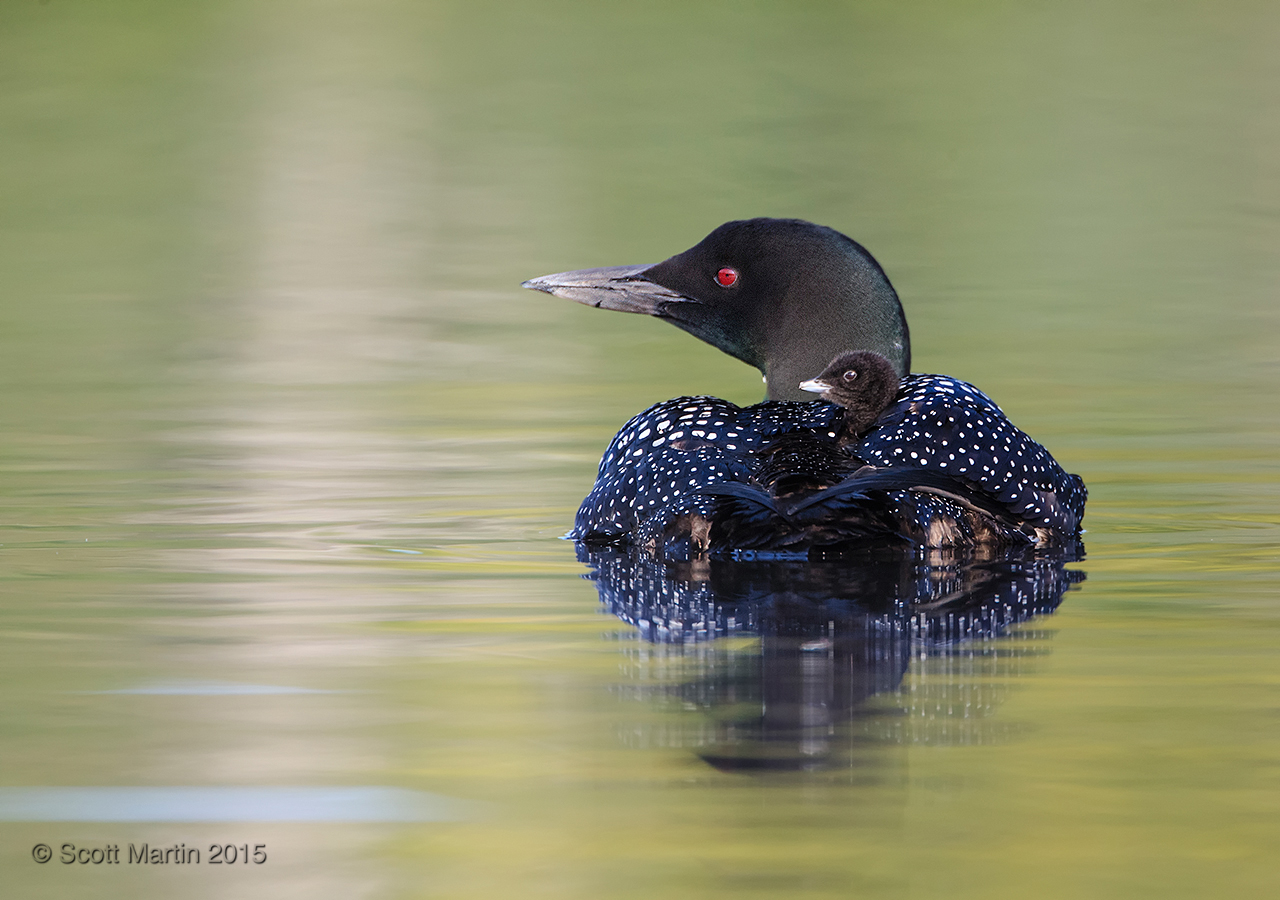
All of the images in this post were taken handheld from a canoe, providing a nice low angle of incidence which is appealing for bird photography.
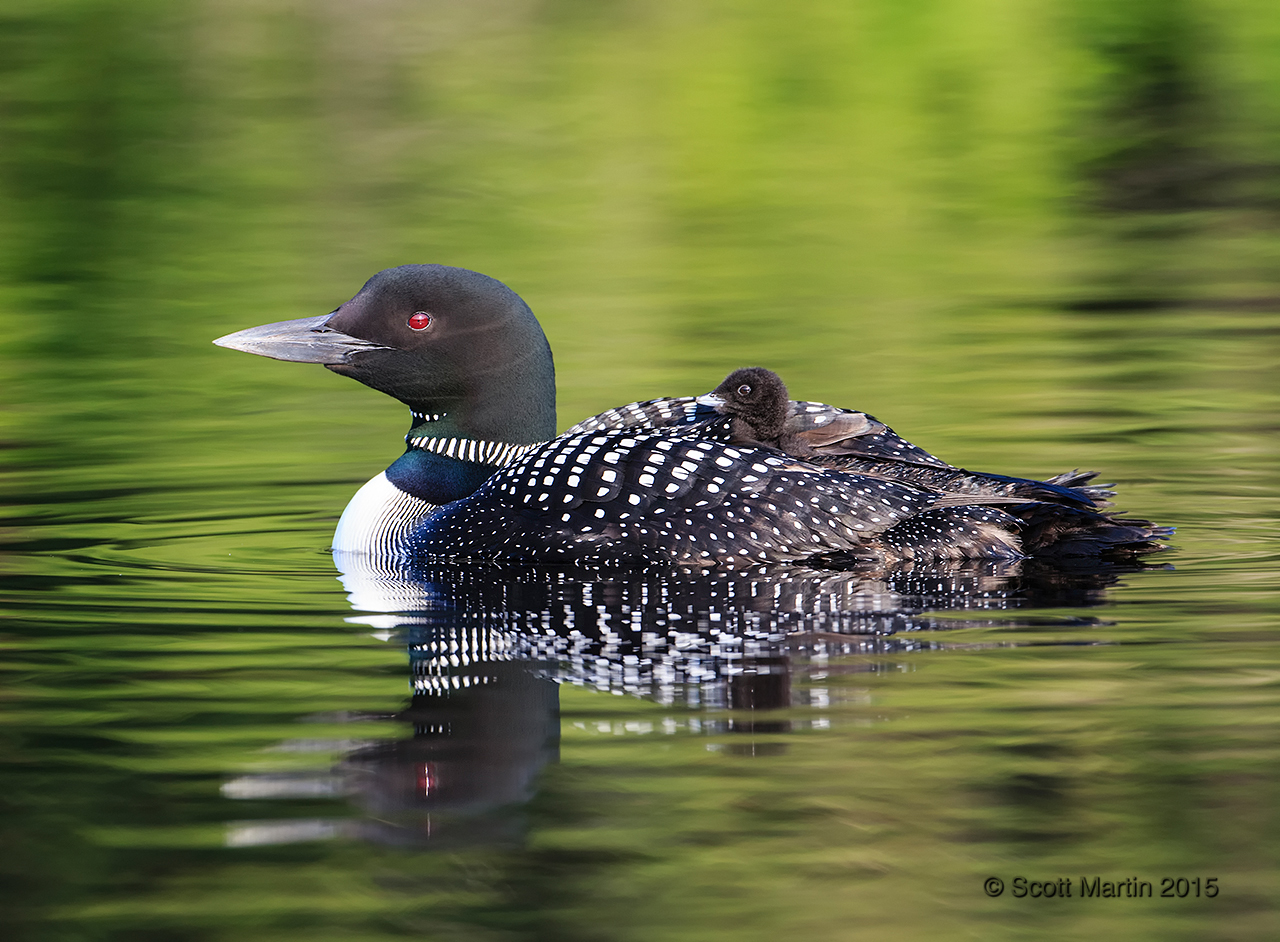
Early morning is the best light for photographing Loons with the low sun highlighting their deep red eyes and typically the waters are calm making for nice reflections. The green back ground is created by the reflection of the shoreline vegetation on the water and when possible it is always a good idea to position yourself to create different combinations of lighting on the bird and back ground colour. The effects can be dramatic. These next two images are of the same Loon with a very different look due to the back ground colour.
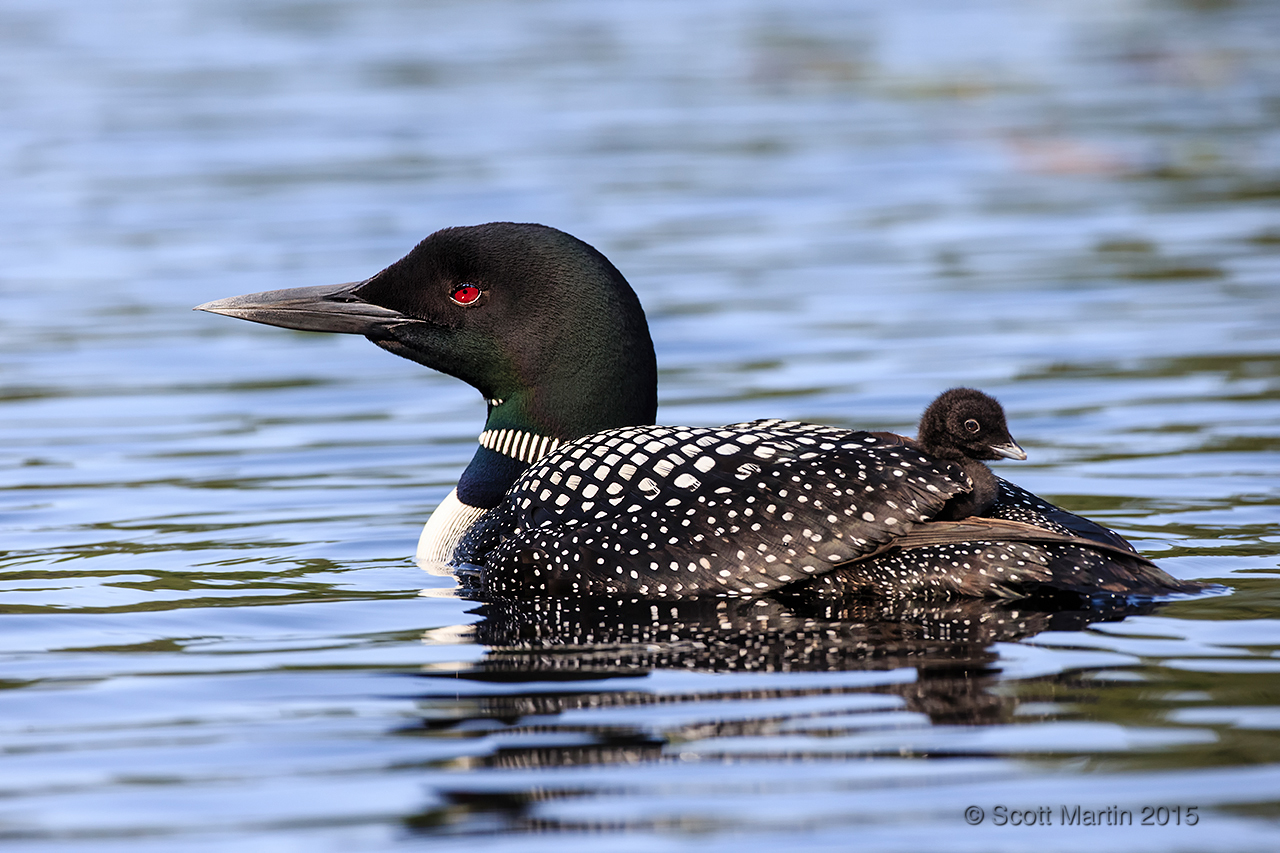
.

Common Loons are a pleasure to watch and hearing their distinctive calls is like no other bird. The following images are an attempt to capture the activities of these beautiful birds.
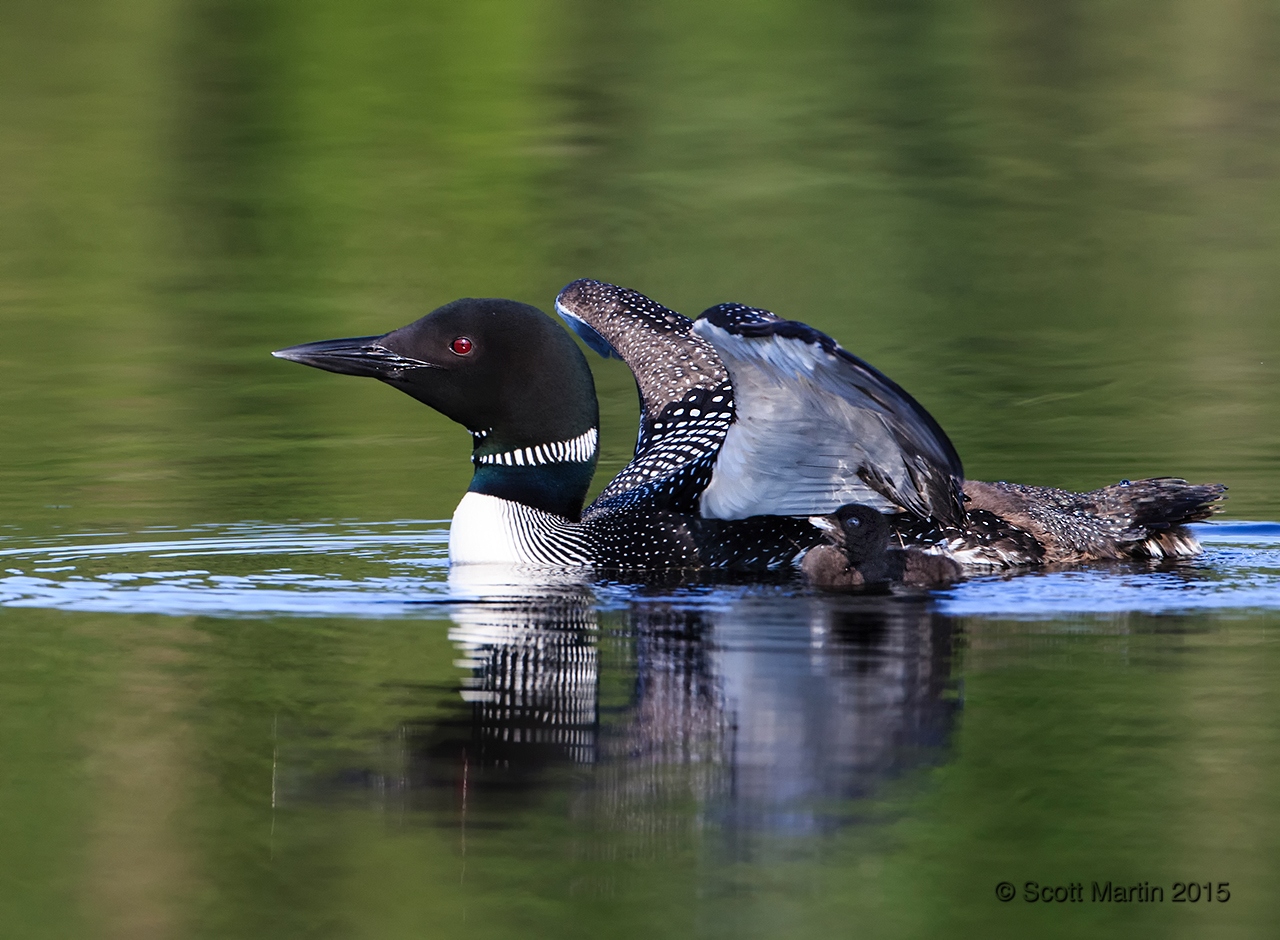
.
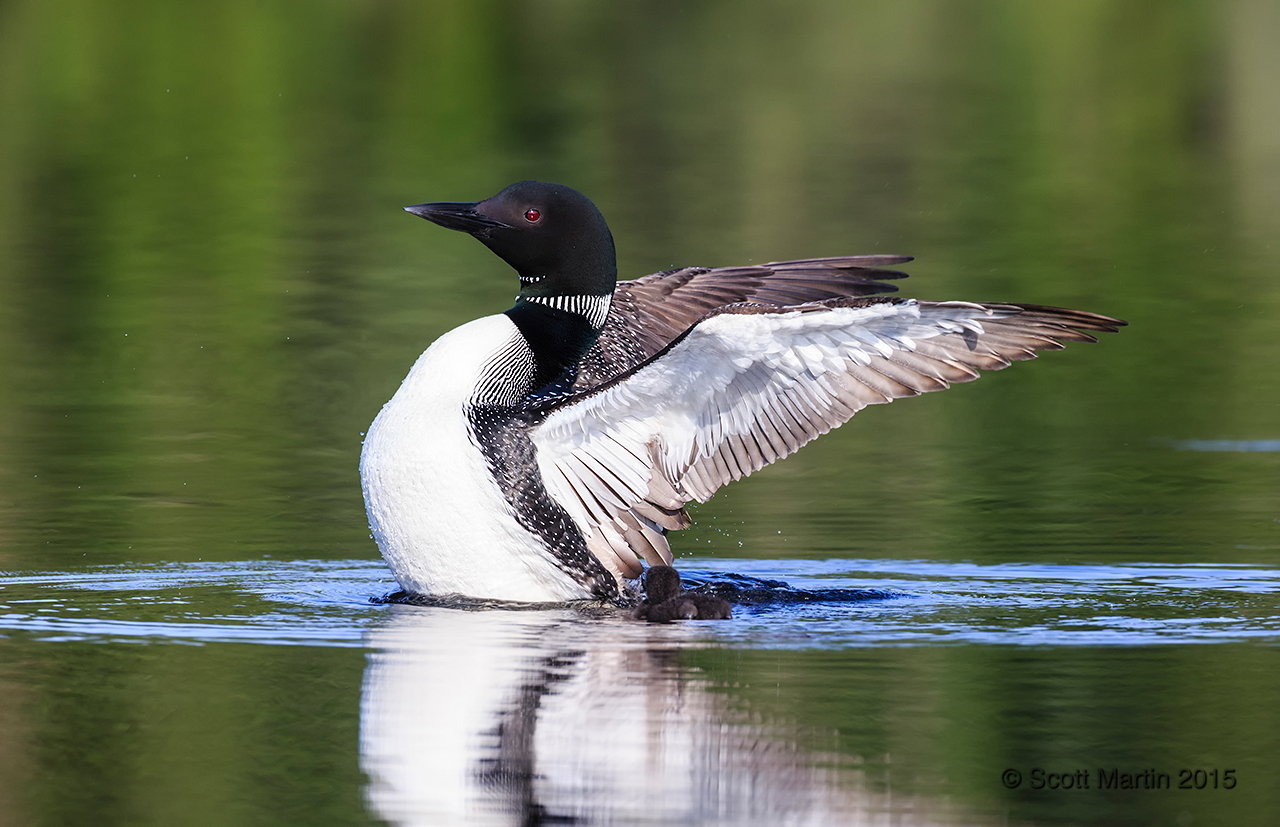
.
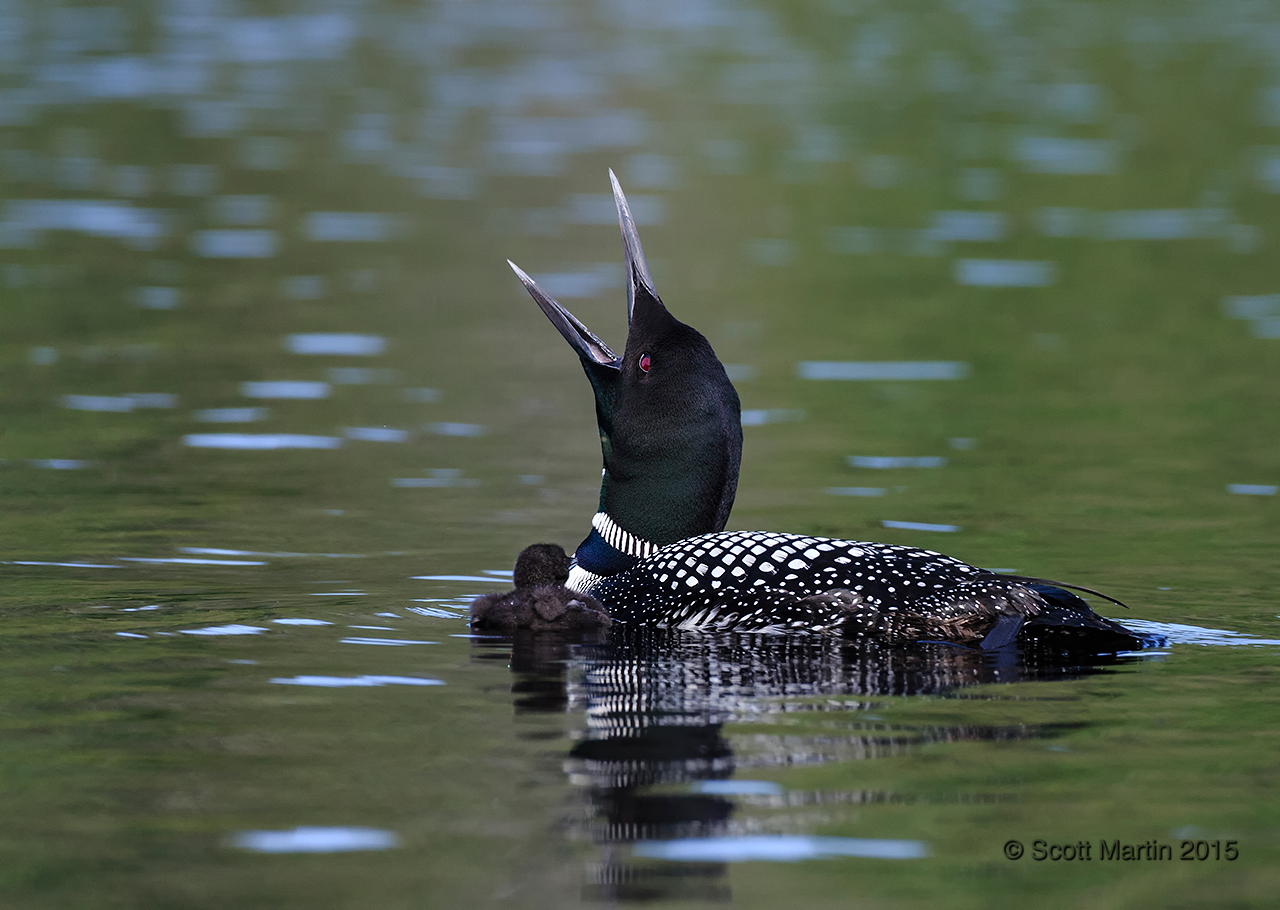
.
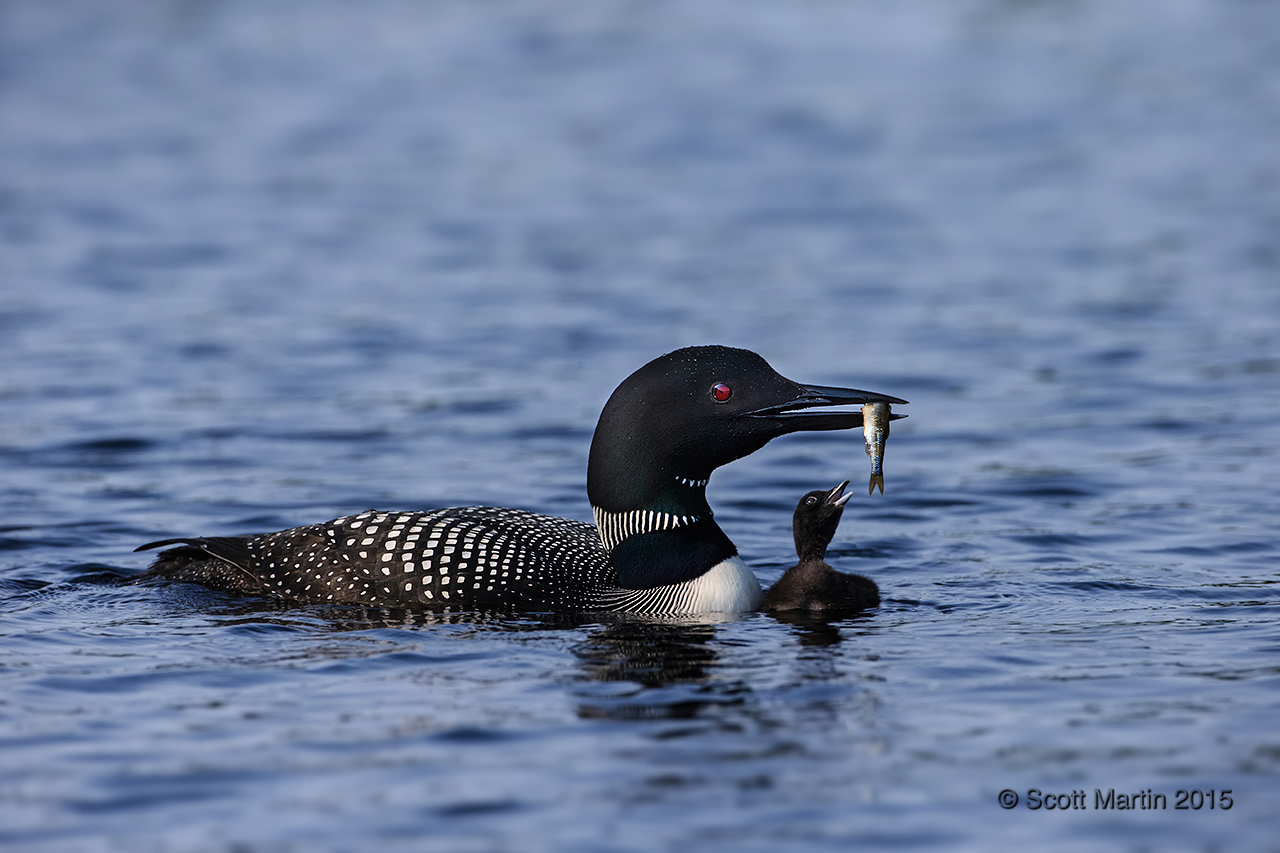
.
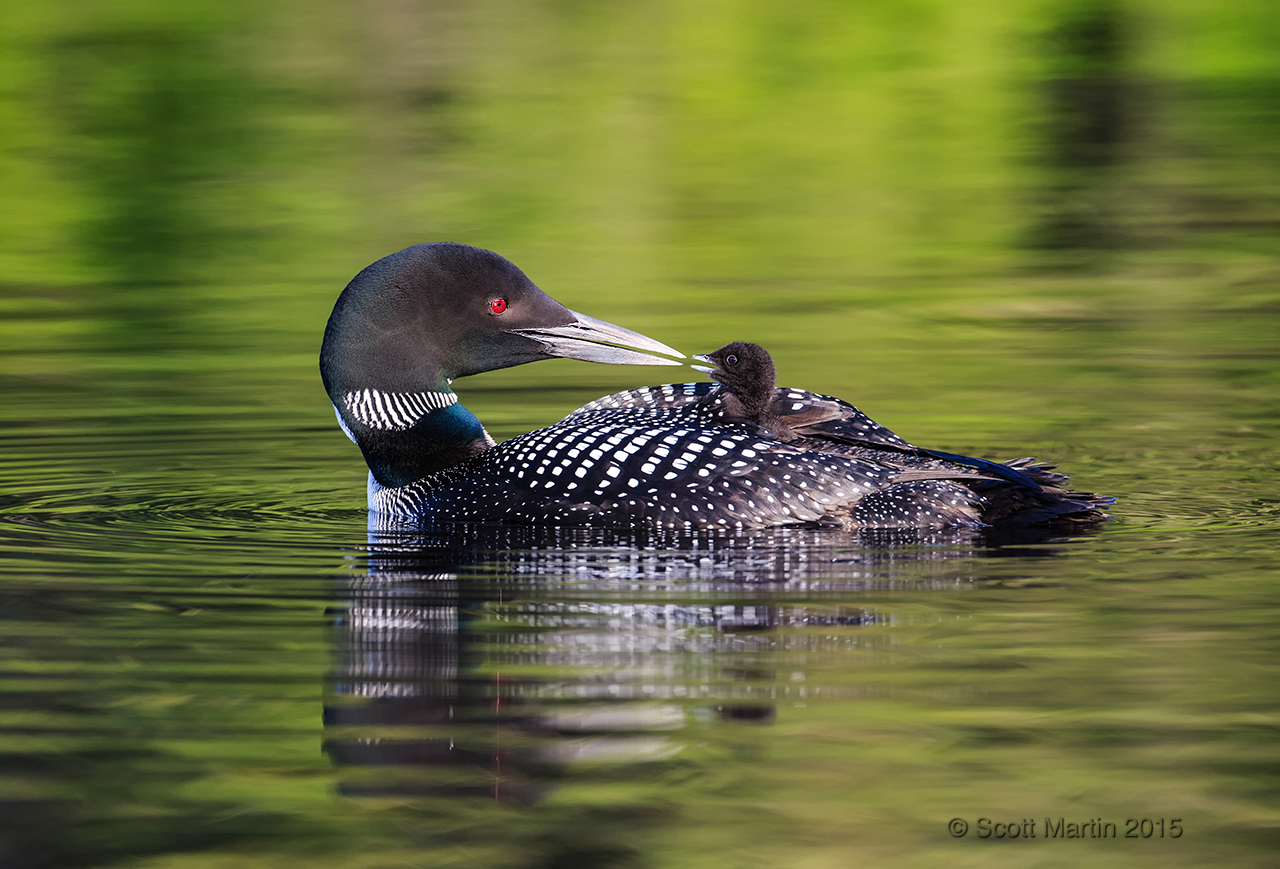
As hinted in the title of this post, this Loon photography excursion was also the first practice session with a new camera body; the Canon 1Dx. This particular body is design optimized for sports and wildlife photography or any activity where you are attempting to capture objects moving quickly through the field of view. It accomplishes this by having a very high frame rate. The 1Dx is capable of taking exposures at 12 frames per second in RAW format and 14 frames per second in JPEG format. This makes the camera ideal for photographing birds in flight and I was glad that a Loon obliged us with a fly by close to our canoe. Here are two in flight captures of the Loon taken with the 1Dx and Canon EF 500mm f4 IS lens, handheld from the canoe which is quite a challenge, however like anything, practicing enhances the results.
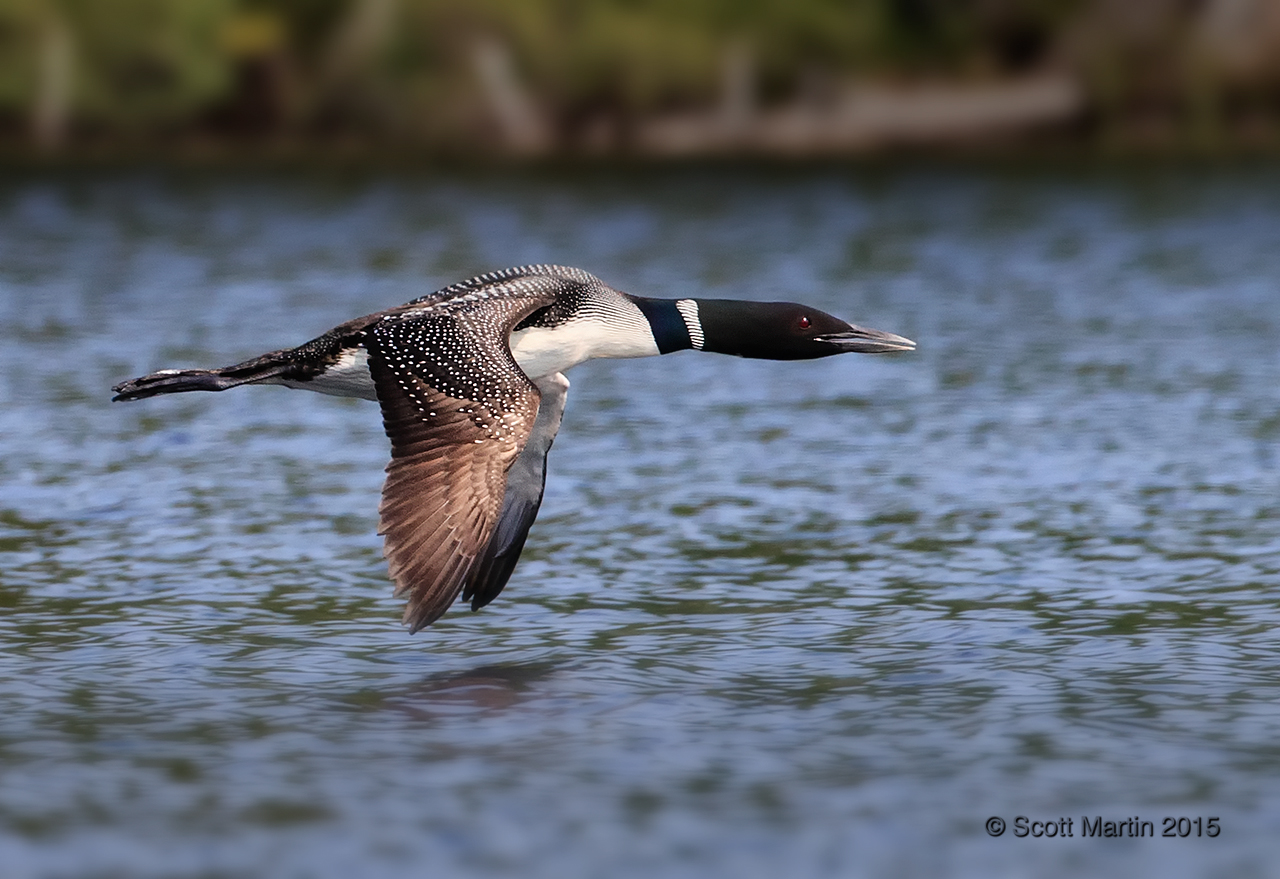
.
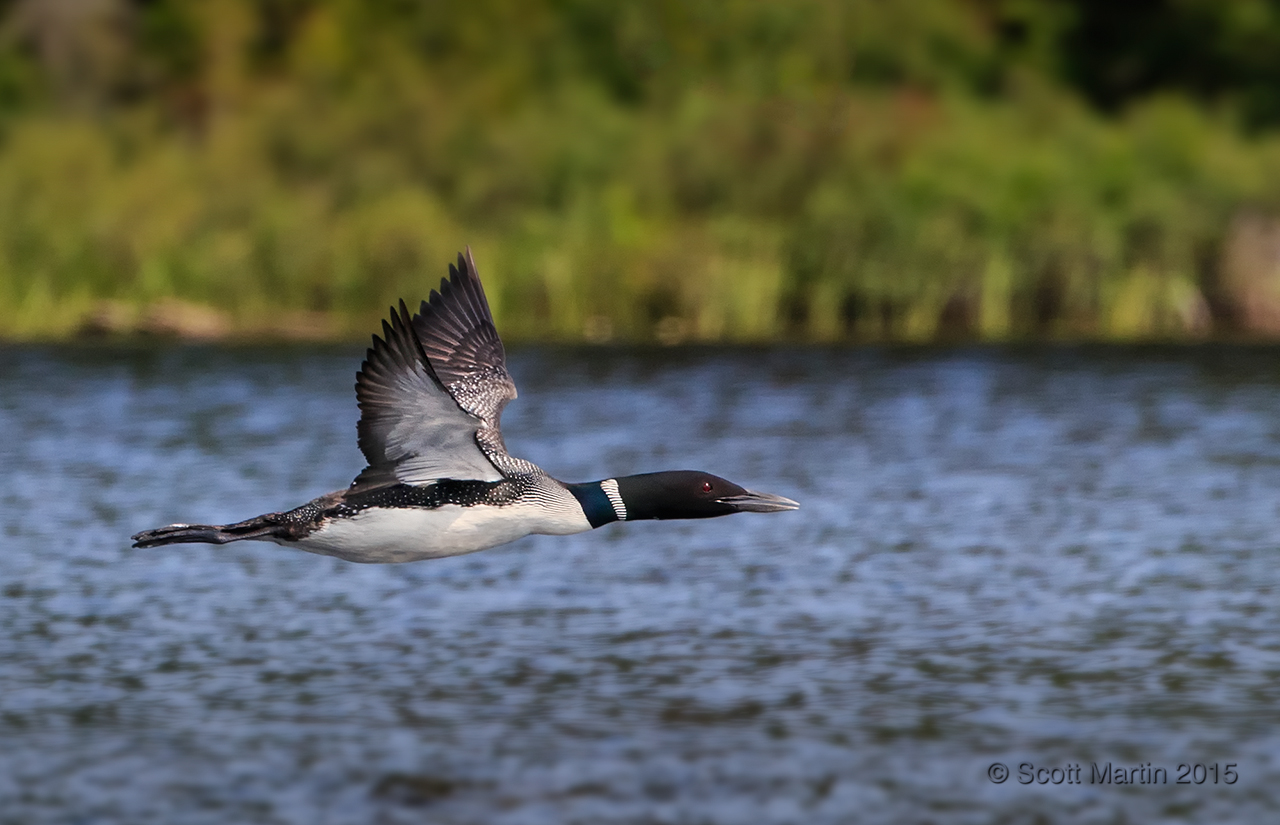
Now that I have upgraded to the new camera, my Canon 1D Mk III is up for sale and if any of you are looking for a great camera body and looking to move up to a professional grade body, this could be the perfect opportunity for you. It comes with all the original packaging and is looks just like it did when it was brand new. Send me an email if you are interested and I will send the details and pics of it. The 1D Mk III is a 10 frame per second, 10 megapixel camera.
Sometimes when you take a lot of pics you get some pleasant surprises when processing the images. This next image, and the last one in today’s post, is one of those shots and its become my favourite photograph from our morning with the Loons. The reason being, I didn’t notice the day old chick poking its head out from under the protective cover of mom or dad’s wing until seeing the image displayed on the monitor. I trust you enjoy it as well.
Peek-A-B00
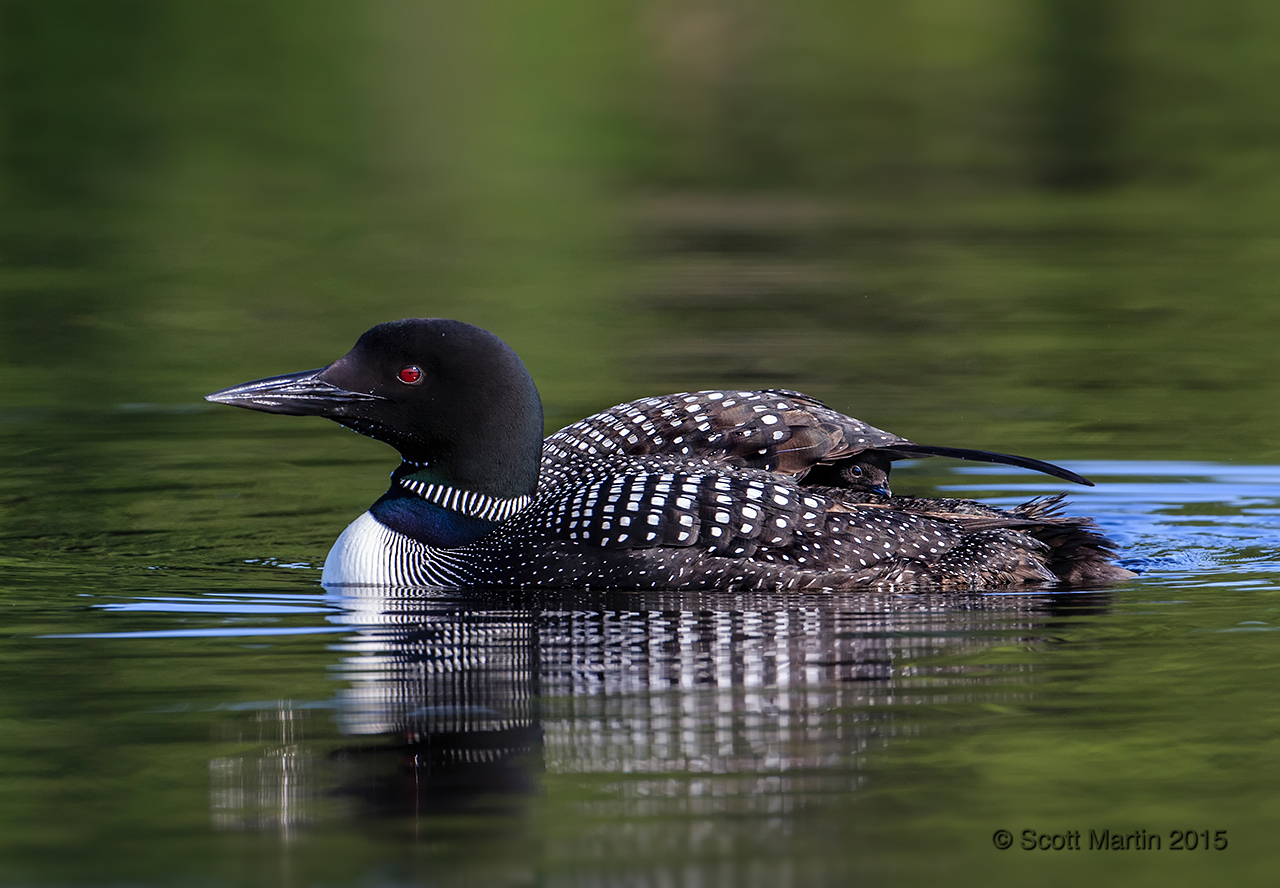
There are a number of other Loon images from our day in Algonquin Park posted in the Loons & Grebes Gallery as well as Loon photographs taken at other times.
Thanks for taking time to work through this post and as always your comments are welcomed.

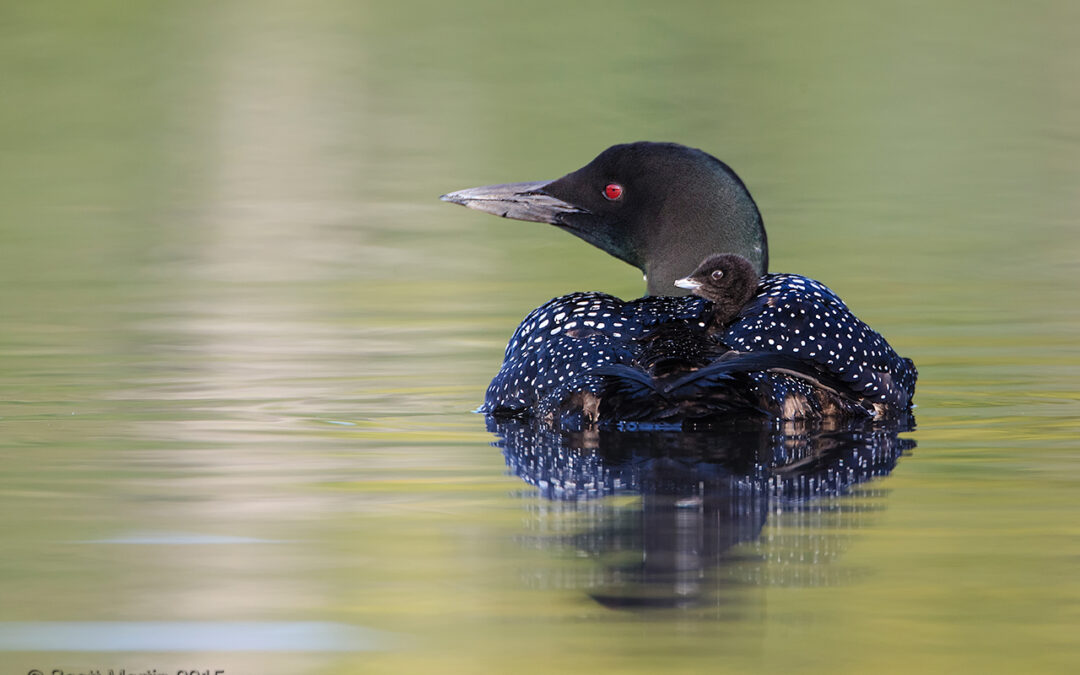
The shots look great and the 1Dx seems like great machine for what you shoot. I must say, my back is glad that I don’t have to carry around that kind of camera gear; landscapes don’t move around too quickly for my Fuji. 😉
Again, super nice shots, Scott!
Thanks Darren and you are right, the gear does get pretty heavy. Thats why I also use the Fuji as much as possible. They are terrific cameras.
It wasn’t any work at all to read through your post Scott which is punctuated with superb images Scott. We photographers are always trying to improve our images and obtain a ‘better’ one. Now you won’t have to go back to Algonquin to capture images of Loons for a very long time. The 1Dx seems to agree with you 🙂 and I wish you many years of enjoyment with this fine piece of camera gear.
Thanks Arni and the 1Dx was just another attempt at keeping up with you in the gear department 🙂